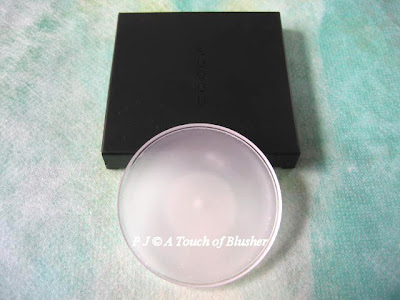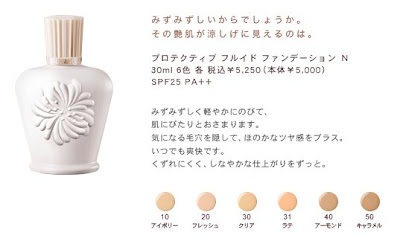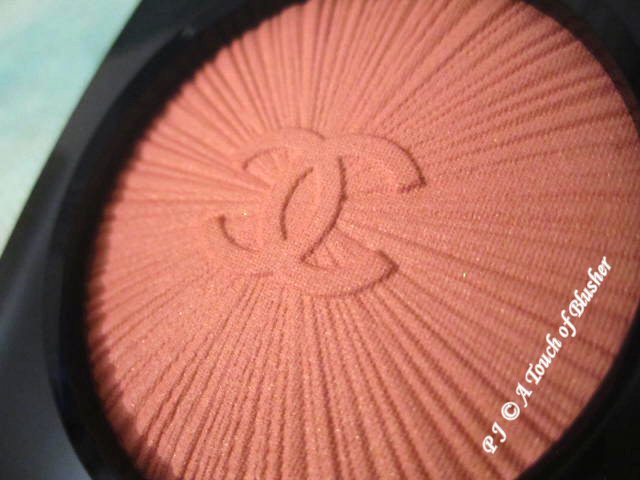SUQQU‘s Loose Powder was released as part of the brand’s fall 2007 base makeup collection. It is available in two shades, Natural and Deep. The two shades work together to create highlight and contour for the face. Today I am reviewing the shade in Natural.
Color-wise, Natural is a sheer off-white cream. It has a subtly pearly finish. When I tested it on the back of my hand, I thought the finish might be too pearly for me. I was also worried that the luminous finish might make my pores look more obvious. But when worn on the face, it imparts a softly luminous finish that is neither pearly or frosty. It doesn’t accentuate the look of pores. Also, the powder is very light and fine.
The enclosed powder puff is relatively soft and easy to use.
Compared with Lavshuca Face Powder and Kiss Mat Chiffon Powder, this product doesn’t have any efficacy in shine control or pore coverage. (It also has the least amount of coverage among the three.) It will not work as a setting powder for those with combination or oily skin.
Among the loose powder products that I have reviewed, it is the closest to Crème de la Mer’s The Powder in Translucent. The main difference is that SUQQU’s finish is more natural and less shimmery and it doesn’t have the pink iridescence that the Crème de la Mer powder has. Overall, as a highlighting powder (particularly for daytime makeup), I prefer SUQQU’s.
Essentially, this is a finishing powder that works as a subtle highlighter, as it adds a soft and very natural glow for the face. It is also subtle enough to be used all over the face if the softly glowy finish is what you would like to go for. (It is able to help create the “brilliant skin” that is very popular in Japan right now.)
(SUQQU is currently available in Japan, Thailand, and the UK. Check here to see the information on all the SUQQU retail points.)
Updated on July 26th 2009:
Examples of “Brilliant Skin”, requested by reader Tamtam. (I am also considering writing up a separate post on this trend.)
More on SUQQU’s fall 2007 base makeup collection:
Foundation Face-Off: Chanel vs. SUQQU
Other related posts:
SUQQU Fall 2009 Point Makeup Collection
SUQQU Fall 2009 Base Makeup Releases
Japanese Beauty Brand Profile: SUQQU
{ 7 comments }




















